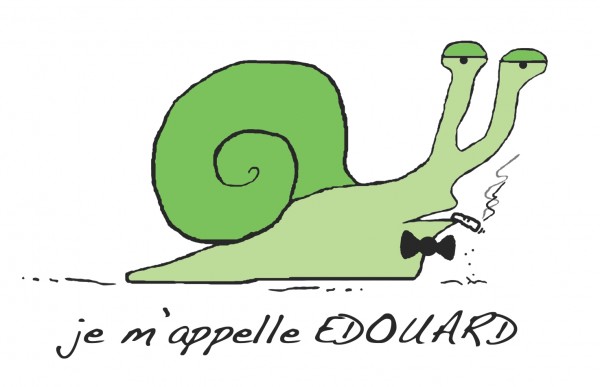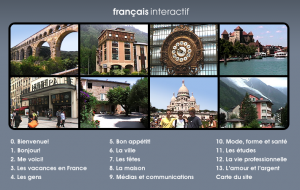Texas Language Technology Center develops low-cost textbook alternative
With textbooks often costing more than rent, many students will be relieved to know the Texas Language Technology Center (TLTC) is working on an alternative to the bulky old textbook that’s easier on the wallet and offers interactive features and compelling content.
The TLTC has won a two-year, $263,000 award from the U.S. Department of Education’s Fund for the Improvement of Post-Secondary Education (FIPSE) to develop a publishing model for foreign language instructional materials to combat the rising costs of textbooks. The collaboratively published textbook will allow students and instructors to customize materials by editing existing content or adding their own.
“Improving foreign languages curriculum for University of Texas students is our first goal,” says Carl Blyth, TLTC director. “But, at the same time, we want to produce scholarship and pedagogical products that we can give away to the world. This is something the university is doing for the greater good that’s central to the open education movement.”
The award brings the TLTC’s grant funding total to more than $1 million since its inception three years ago. In fall 2007, TLTC in collaboration with Liberal Arts Instructional Technology Services (LAITS) was awarded a three-year $540,000 FIPSE grant and in spring 2008 it was awarded a twoyear $250,000 grant from the Texas Higher Education Coordinating Board.
In its latest endeavor, TLTC will form a publishing consortium with Rice University, Texas Christian University and Lone Star Community College in Houston. The goal is to create an online French textbook that will be free of charge and free of copyright and licensing restrictions, as well as a printon- demand version that will cost a fraction of most commercially published textbooks.
A beginning foreign language textbook typically costs $125 (and $200 with all the ancillaries, such as audio tapes, video tapes and workbooks). By comparison, Français interactif, a TLTC online curriculum aimed at first-year UT French students, offers a range of prices andoptions: free downloadable PDFs or print-on-demand textbooks delivered to your doorstep for just $16.95 for black and white or $50.95 for color.
Blyth describes Français interactif’s content as spontaneous, authentic and playful in tone. It features first-year French students studying abroad who serve as virtual tour guides. The TLTC model focuses on the language learner and the process of learning by showing the interaction between the native and non-native speaker.
“Foreign languages have been at the forefront of educational technology,” says Blyth. “We’re trying to enrich the context as much as we can to make it a more authentic learning experience. The new pedagogy is about creating a richer context: simulation, visualization and text.” Blyth finds that a multimedia approach brings all of these aspects together.
“In the old days you’d go to a language lab and hear the input, but the input was very inauthentic: ‘Repeat after me,’” mimics Blyth. “You need to see people talking. We’re trying to get students to communicate and that requires a context; it requires another person.”
For Kelle Keating, a Ph.D. candidate and assistant instructor in the Department of French and Italian, one of the greatest benefits of the new endeavor is that students work with all of the textbook exercises in the early stages, giving them direct input in the way the curriculum is shaped.

Keating, who is also the first TLTC graduate student grantee, notes that with ownership comes more responsibility. “Sometimes you have to say, ‘yes, I know this exercise is confusing, I’m not sure what we were thinking,’” she says of some of the older Français interactif exercises and the importance of listening and incorporating student feedback.
This is when the flexibility of using online resources and the ability to collaborate to develop the best resources really pays off.
“The traditional textbook is a package,” says Keating. “You can’t take it apart and put it back together. Some parts are going to be great and some parts might not be so great.” Some may have great cultural content, but poor presentation of grammar, or vice versa, she explains.
The TLTC has used its strong roots in language teaching pedagogy to design a guided way to introduce students to the language and culture that won’t overwhelm them because these elements have been carefully integrated in exercises that are focused for their particular level, says Keating.
In addition, the TLTC has improved foreign language instruction by exploring the potential of emerging technologies. It has developed open access websites in six different foreign languages (Arabic, French, German, Italian, Portuguese, and Spanish). The sites were recently recognized as an exemplary online learning resource by the organizers of MERLOT (Multimedia Educational Resource for Learning and Online Teaching), a highly regarded collection of peer reviewed online learning materials.
Blyth and project manager Karen Kelton, a senior lecturer in the Department of French and Italian, were specifically recognized, as was the work of Orlando Kelm, associate professor of Spanish and Portuguese.
The MERLOT editorial teams usually give awards for a specific website or specific textbook or resource. In the case of TLTC, they gave the award to the center, which Blyth notes as an important distinction. “We’re not talking about a journal article that has been peer reviewed from an editorial board of 20. We’re talking about literally hundreds of thousands of materials, so their review boards are larger.
“There are a lot of language materials, but the people in the field recognize this as quality,” says Blyth. “Frankly, I don’t know of any other university that has what we have here. We’ve had publishing companies come and try to buy our materials, and we say sorry they’re not for sale.”
For more information, visit the Texas Language Technology Center website.

